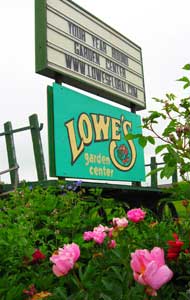This is the first post of what I am hoping to make into a series of posts on the Common Questions we get at Lowe’s every year. Some of them will be of seasonal interest, others will be general knowledge. I hope you find some of them useful and other ones interesting.
In the years of combined experience our floral artists have (over 60 years now) sometimes we get a question from a customer that catches us a little off base. The following two are great examples of a unique ‘how to’ kind of question we have had three or four ties in this past couple of weeks: “How do I keep a houseplant small?” or “How do I keep this houseplant cute?”
At the heart of the question lies a definite need; I don’t have space in my house/office/in this cute container/on my desk for a huge plant. This new way of using houseplants, as decor, has cropped up more and more commonly in the last decade. In fact, if you have ever shopped at IKEA you know that the last section after housewares and candles, just before you walk into the main warehouse, is houseplants.
The best advice we can give on keeping a houseplant small/cute/in scale with the container is two fold:
1. Choosing the right type of plant
2. and, Frequent pruning or pinching.
Choosing the right plant means looking for slow growing species like a heavily varigated plant. Plants that have a low growing or trailing habit would also work well to keep petite. Depending on your lighting conditions and what types of plants you like, I would recommend nerve plant, succulents, coffee plant, or a small leafed ivy.
Now, as for pruning, always prune plants directly above a leaf, this will encourage branching. It is normally safe to prune any given plant by up to 1/3 of its current size (that’ means cut off a third, don’t cut off two thirds and leave one third…). After pruning, the plant will go through a period of shock like people do if they get a bad hair cut, but just like people, the plant will eventually get over it.
The other two sound pieces of advise I can offer anyone with a specific size requirement for a “decorating plant” are:
1. to purchase a good quality permanent boutancial (silk plant) as it will never grow and will always stay the perfect size, and
2. to consider using houseplants like annuals and changing the “decorating plant” seasonally. For the starter size plants we would normally plant in a dish garden, the total cost to replace the plant quarterly would be less than $15.00; that’s a great value for a piece of living art as an accent to a home or office!


{ 1 trackback }
Comments on this entry are closed.